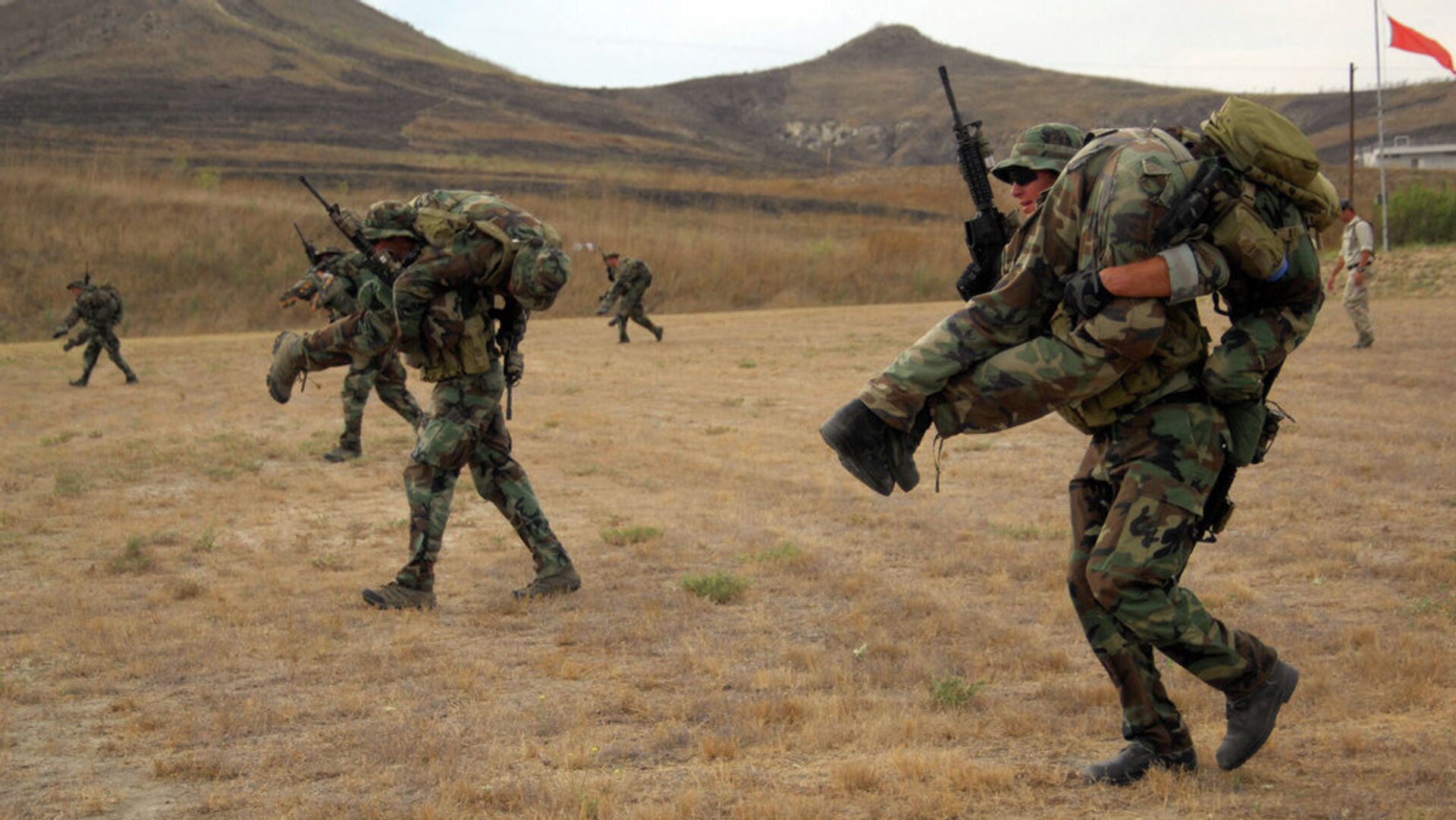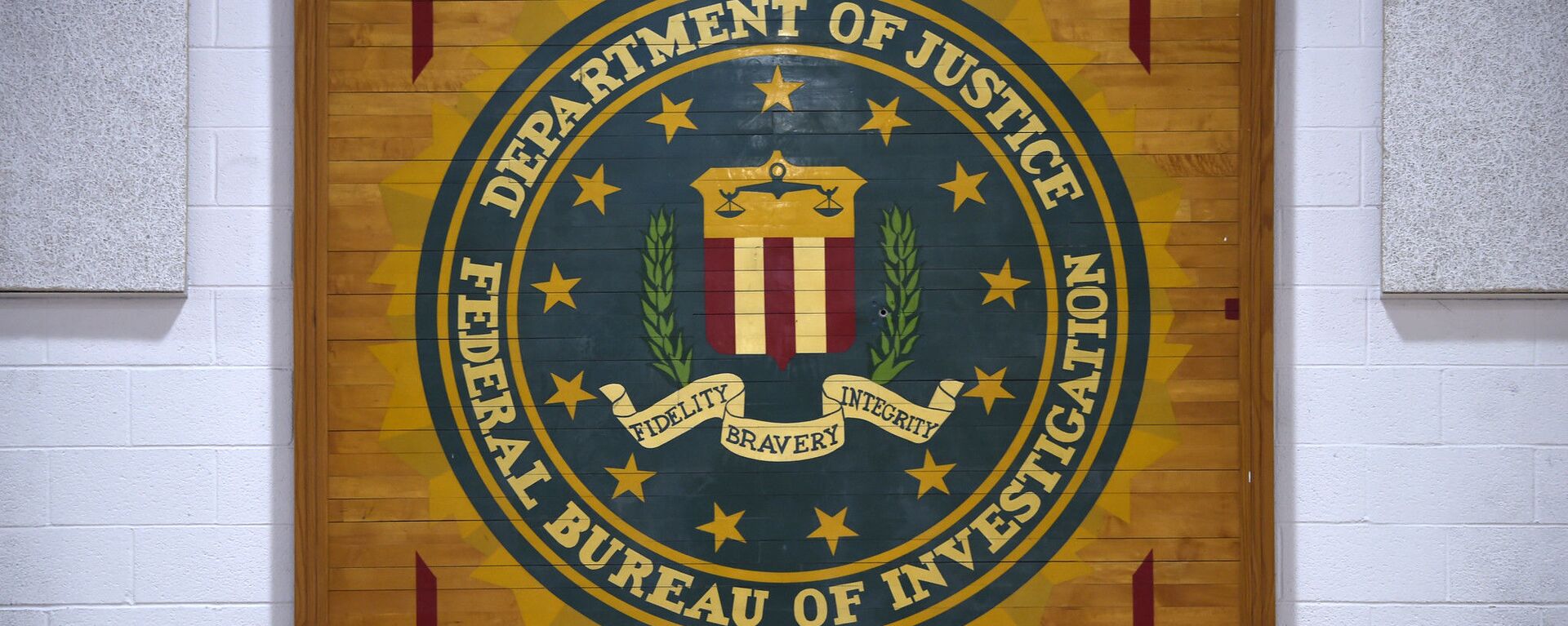https://sputnikglobe.com/20230526/10-officers-singled-out-for-possible-charges-in-us-navy-report-on-seals-training-death-1110619038.html
10 Officers Singled Out for Possible Charges in US Navy Report on SEALs Training Death
10 Officers Singled Out for Possible Charges in US Navy Report on SEALs Training Death
Sputnik International
A scathing US Navy report was released on Thursday identifying ten officers for what it called “a near perfect storm” of failures that led to the death of seaman Kyle Mullen last year on the SEALs training course.
2023-05-26T21:30+0000
2023-05-26T21:30+0000
2023-05-26T21:26+0000
us navy seals
death
us navy
report
military
https://cdn1.img.sputnikglobe.com/img/102303/87/1023038728_0:0:1024:577_1920x0_80_0_0_c83fd991aae24d689ecb5fb2f45979ce.jpg
The names of most of the ten officers are redacted in the report, which was issued by Naval Education and Training Command, and charges have not yet been filed against them. Those named include Capt. Brian Drechsler, the commodore of the Navy Special Warfare training center, and Dr. Erik Ramey, the training command’s chief medical officer. Both have been reassigned for failing to perform their duties.The report found that medical oversight and care were “poorly organized, poorly integrated and poorly led and put candidates at significant risk,” causing an increasing number of students to be hospitalized and even die, as Mullen did in February 2022.Mullen was the 11th such death in recent years in the gruesome training course, which has always been so difficult that just 30% of those who enter it are typically expected to graduate. However, after new leadership took over in 2021, the graduation rate slid even further.According to the report, Rear Adm. Hugh W. Howard, the commander of the school at the time, told subordinates it was fine if nobody graduated.The report criticizes instructors for having little experience or training which, combined with the harsher regimen, led them to see themselves not as building new SEALs, but as enforcers “hunting the back of the pack” to “weed out” the weak.According to the report, the commander in charge of the course at the time, Capt. Bradley Geary, “believed the primary reason for attrition issue was the current generation had less mental toughness.”Referring to the escalation of difficulty as “intensity creep,” the report said instructors pushed students “to the far end of the acceptable spectrum,” making exhaustion, illness, and injury more common.An investigation by a US newspaper following Mullen’s death found instructors kept students in cold water for long periods of time, denied them sleep, beat them, and denied them medical care unless they quit the course. Students also participated in the abuse, which critics said made the course little more than a hazing ritual.After his death, Navy personnel found performance-enhancing drugs, including testosterone and human growth hormone, in his car. However, Naval Special Warfare Command said in an October report that the 24-year-old seaman had died “in the line of duty, not due to his own misconduct.”
https://sputnikglobe.com/20230418/fbi-investigating-ex-us-navy-officer-over-spread-of-pentagon-leaks---reports-1109627599.html
https://sputnikglobe.com/20211029/texas-students-sue-fraternity-after-hazing-incident-left-them-permanently-disfigured---report-1090327631.html
Sputnik International
feedback@sputniknews.com
+74956456601
MIA „Rossiya Segodnya“
2023
News
en_EN
Sputnik International
feedback@sputniknews.com
+74956456601
MIA „Rossiya Segodnya“
Sputnik International
feedback@sputniknews.com
+74956456601
MIA „Rossiya Segodnya“
us navy seals; kyle mullen; death; report
us navy seals; kyle mullen; death; report
10 Officers Singled Out for Possible Charges in US Navy Report on SEALs Training Death
A scathing US Navy report was released on Thursday identifying 10 officers for what it called “a near perfect storm” of failures that led to the death of seaman Kyle Mullen last year on the SEALs training course.
The names of most of the ten officers are redacted
in the report, which was issued by Naval Education and Training Command, and charges have not yet been filed against them.
Those named include Capt. Brian Drechsler, the commodore of the Navy Special Warfare training center, and Dr. Erik Ramey, the training command’s chief medical officer. Both have been reassigned for failing to perform their duties.
“The investigation revealed a degree of complacency and insufficient attentiveness to a wide range of important inputs meant to keep the students safe,” the report said. That included the practices of instructors, the readiness of medical staff, and screenings against the abuse of performance-enhancing drugs used by students struggling with the course.
The report found that medical oversight and care were “poorly organized, poorly integrated and poorly led and put candidates at significant risk,” causing an increasing number of students to be hospitalized and even die, as Mullen did in February 2022.
Mullen was the 11th such death in recent years in the gruesome training course, which has always been so difficult that just 30% of those who enter it are typically expected to graduate. However, after new leadership took over in 2021, the graduation rate slid even further.
According to the report, Rear Adm. Hugh W. Howard, the commander of the school at the time, told subordinates it was fine if nobody graduated.
"Zero is an okay number on the berm; hold the standard,” he reportedly told them.
The report criticizes instructors for having little experience or training which, combined with the harsher regimen, led them to see themselves not as building new SEALs, but as enforcers “hunting the back of the pack” to “weed out” the weak.
According to the report, the commander in charge of the course at the time, Capt. Bradley Geary, “believed the primary reason for attrition issue was the current generation had less mental toughness.”
“Allowing continued execution of the curriculum in this manner while accompanied by historic, rapid and significant changes to attrition demonstrated insufficient oversight” by Geary, the report said.
Referring to the escalation of difficulty as “intensity creep,” the report said instructors pushed students “to the far end of the acceptable spectrum,” making exhaustion, illness, and injury more common.

29 October 2021, 20:41 GMT
Indeed, Mullen had been suffering from pneumonia and other ailments during much of what is perhaps not so euphemistically known as “Hell Week.” Even as Mullen struggled to breathe, the medical officer advised other students not to call 9-1-1, claiming it would interfere with their training.
An investigation by a US newspaper following Mullen’s death found instructors kept students in cold water for long periods of time, denied them sleep, beat them, and denied them medical care unless they quit the course. Students also participated in the abuse, which critics said made the course little more than a hazing ritual.
After his death, Navy personnel found performance-enhancing drugs, including testosterone and human growth hormone, in his car. However, Naval Special Warfare Command said in an October report that the 24-year-old seaman had died “in the line of duty, not due to his own misconduct.”




